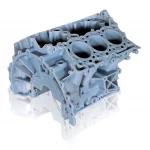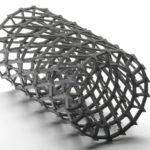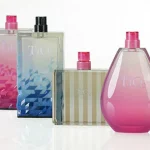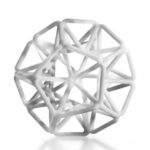HP MultiJet Fusion
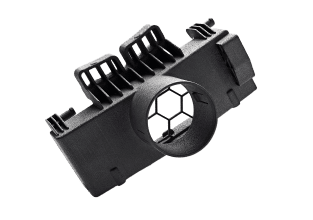
Nylon 12 (HP High Reusability PA 12)
Material: Polyamide 12 (Nylon PA 12)
HP 3D High Reusability PA 12 is a robust thermoplastic that produces high-density parts with balanced property profiles and strong structures.
Specs
- Powder Melting Point (DSC): 187° C or 369° F, ASTM D3418
- Particle Size: 60µm
- Bulk Density of Powder: 0.425 g/cm3 0.015 lb/in, ASTM D1895
- Tensile Strength: 30 MPa
- Elongation at Break: 20%
- Young’s Modulus: 1600 MPa
- Charpy Impact Notched Test: 35kJ/m²
Application
- Consumer goods and electronics
- Low-high volume production
- Rapid prototyping
- Manufacturing aids
- Tooling, end-of-arm tooling, robotics
- Medical
- Porthotics, prosthetics
Technology/Process
HP Multi Jet Fusion (Powder Bed Fusion)
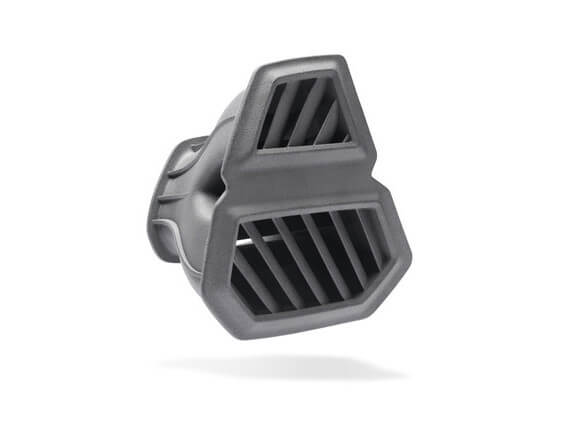
Polypropylene (HP High Reusability PP by BASF)
Material: Polypropylene
This polypropylene 3D printing material is designed for parts that require high strength, excellent chemical resistance and low moisture absorption.
Specs
- Tensile strength: 30 MPa
- Young’s modulus: 1600 MPa
- Elongation at break: 20 %
- Charpy impact notched: 3.5 kJ/m²
- HDT B: 100 °C
Application
Car interior parts, fluid and HVAC systems, tubes, pipes, reservoirs, medical devices, orthotics, functional prototypes, multi-purpose industrial goods
Technology/Process
HP Multi Jet Fusion (Powder Bed Fusion)
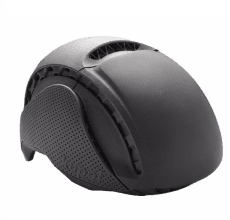
Nylon 11 (HP High Reusability PA 11)
Material: Polyamide 11 (Nylon PA 11)
Thermoplastic polymer, known for its toughness, chemical and high-temperature resistance. It is commonly used to produce functional prototypes, end-use parts, and tooling.
Specs
- Tensile Strength:
- 50 MPa/7250 psi (XY axis)
- 50 MPa/7250 psi (Z axis)
- Powder Melting Point (DSC): 202° C / 396° F, ASTM D3418
- Particle size: 54 microns, ASTM D3451
- Bulk density of powder: 0.48 g/cm³, 0.017 lb/in³
- Density of parts: 1.04 g/cm3, ASTM D792
- Biocompatibility – meets USP Class I-VI and US FDA guidance for Intact Skin Surface Devices
Application
- Healthcare
- Prostheses, Insoles
- Consumer Goods
- Sport goods
- Snap fits
- Living hinges
- Industrial
- Education
Technology/Process
HP Multi Jet Fusion (Powder Bed Fusion)
DLP (Digital Light Processing)
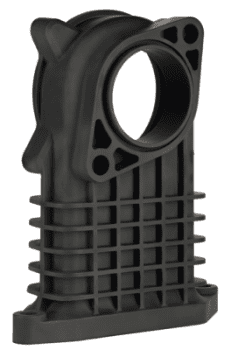
E-Rigid Form
Material: Hard plastics
This polyurethane-like resin 3D prints strong, hard, and stiff end-use parts. It has high tensile strength, delivers good heat deflection, and is water-resistant.
Full Description
E-RigidForm is a versatile and tough material with characteristics such as
- High tensile strength
- High Stiffness
Specs
- Tensile Strength: 68-73 MPa
- Tensile Modulus: 2950-3250 MPa
- Elongation at Break: 6%
- Impact Strength (Notched): 30 J/m
- Heat Deflection Temperature at 1.181 MPa: 62.5°C
Application
- Industrial & Consumer Applications
- Great for prototyping and end-use parts
Technology/Process
- DLP (Digital Light Processing)
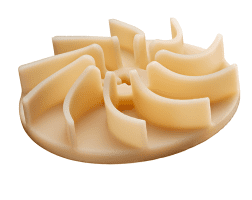
E-Toughflex
Material: Hard plastics
E-Toughflex features very high flexural modulus and strength, as well as hydrophobic properties.
Full Description
E-ToughFlex is ideal for producing tough end-use parts with a beautiful surface finish similar to ceramic and good abrasion resistance.
Specs
- Tensile Strength: 67.5 MPa
- Tensile Modulus:1340 MPa
- Elongation at Break: 16%
- Impact Strength (Notched): 20 J/m
- Heat Deflection Temperature: at 1.82 MPa 58° C
Application
- Consumer Goods
- Education
- Medical Devices
- Manufacturing
Technology/Process
- DLP (Digital Light Processing)
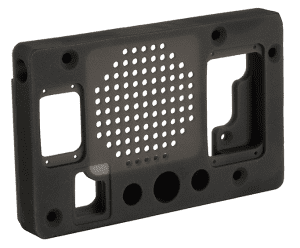
LOCTITE® E-3843
Material: Hard plastics
This semi-flexible ABS-like material is a high-performance, high-modulus material with good impact resistance and thermal stability.
Full Description
Loctite® E-3843 is an ETEC-validated material from Henkel, with excellent flexural and tensile properties and a relatively high degree of elongation. Characteristics:
- Tough resin with high impact resistance
- High print resolution
- Excellent surface finish
- High heat deflection temp
Available in:
- Black
- Grey
Specs
- Tensile Strength:60 MPa
- Tensile Modulus: 1890 MPA
- Elongation at Break: 47%
- Impact Strength: (Notched) 53.8 J/m
- Heat Deflection Temperature at 0.455 MPa (C): 56°C
Application
- End-use parts production
- Functional prototyping
- Engineering applications
Technology/Process
- DLP (Digital Light Processing)
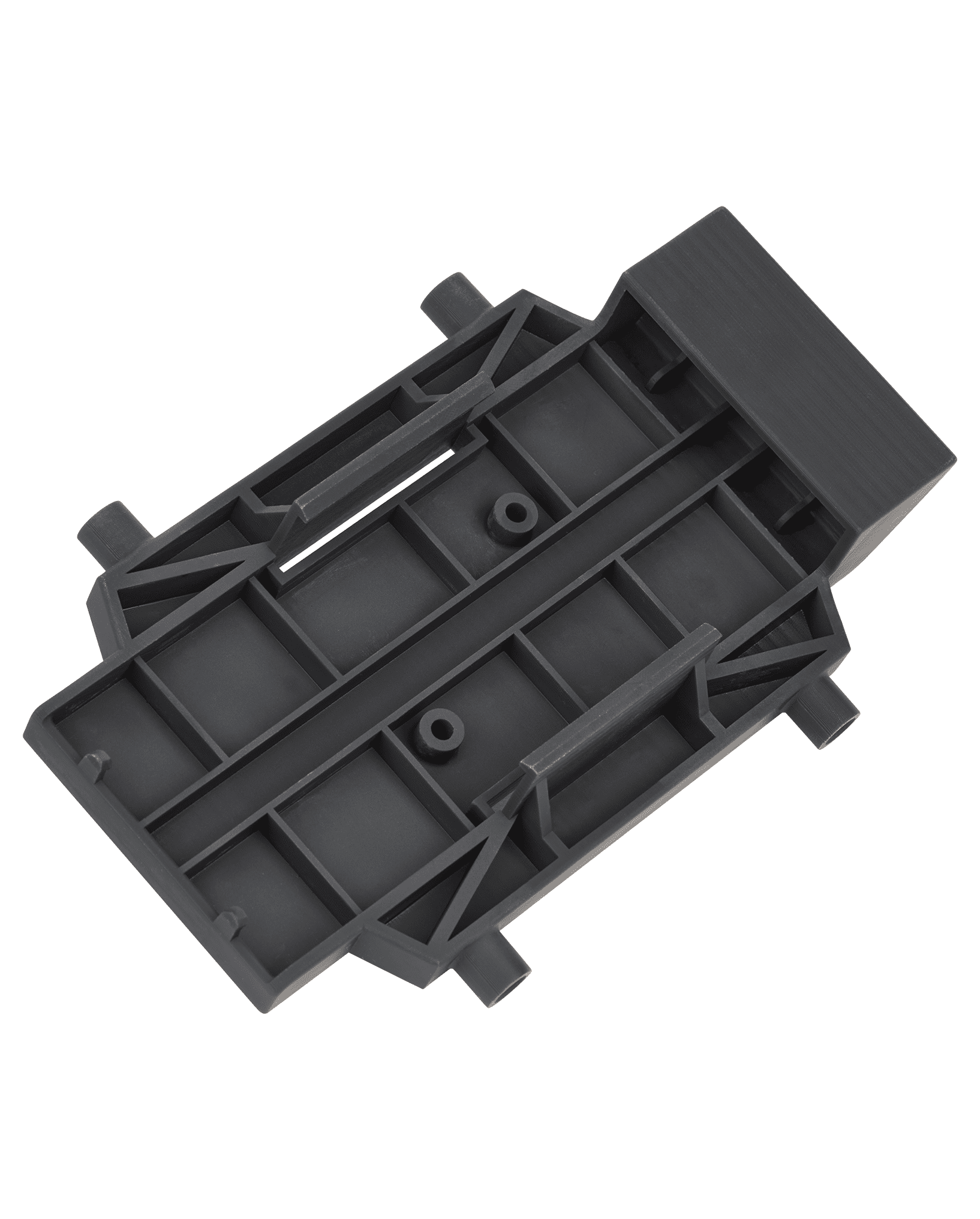
LOCTITE® IND 405
Material: Hard plastics
High-strength engineering plastic, good for end-use parts and tooling applications.
Full Description
A high-strength engineering plastic with good impact resistance and excellent surface finish. Ideal for a wide variety of tools on the production floor and end-use functional high production parts in various industries.
- IND 405 is available in black or clear.
Specs
- Tensile Strength: 52 MPa
- Tensile Modulus: 1300 MPa
- Elongation at Break: 127%
- Impact Strength (Notched): 72 J/m
- Heat Deflection Temperature: at 0.455 MPa 53° C
Application
- Enclosures & housings
- Light pipe prototypes
- Bottle prototypes
- Tooling for high-impact, high-pressure processes
Technology/Process
- DLP (Digital Light Processing)
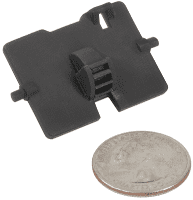
LOCTITE® IND406
Material: High-temperature plastics
LOCTITE® IND406™ is a high-strength, high elongation engineering plastic with good impact and a high deflection temperature of 100°C
Full Description
The material offers all-around strength, good impact resistance, and high elongation. IND406 is a great alternative for traditional injection molded plastics such as ABS and PP.
Key Features:
- High heat deflection temperature
- High elongation while maintaining high heat deflection
- Tough and durable
- The surface finish needed for end use parts
- Biocompatibility: ISO 10993 -5/-23 passed
Specs
- Tensile Strength: 55 MPa
- Tensile Modulus: 1610 MPa
- Elongation at Failure: 25 %
- Heat Deflection Temperature at 0.455 MPa: 107°C
Application
- Production of end-use parts across all industries
Technology/Process
- DLP (Digital Light Processing)
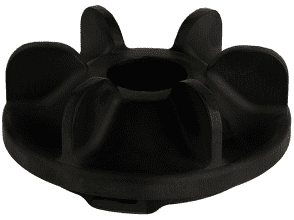
LOCTITE® IND147 HDT230 Tough
Material: High-temperature plastics
Loctite® IND147 is a high-temperature resistant photopolymer and can be printed with very high-resolution features (50 um).
Full Description
This material delivers high stiffness and toughness while withstanding temperatures up to 230°C. The 3D printed parts with Loctite IND147 can be easily painted, sanded or machined for further finishing.
Specs
- Tensile Strength: 75 MPa
- Tensile Modulus: 3192 MPa
- Elongation at Failure: 3%
- Heat Deflection Temperature at 0.455: MPa 238 C
Application
- Tooling (molds)
- High-temperature use parts
Technology/Process
- DLP (Digital Light Processing)
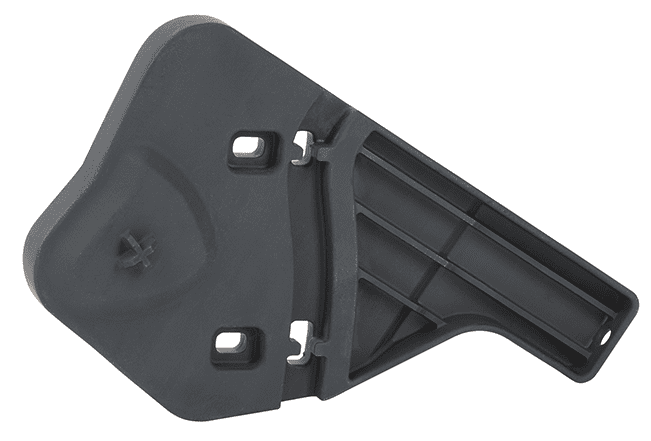
LOCTITE® 3955 HDT280 FST
Material: High-temperature plastics
LOCTITE® 3955™ is a halogen-free, high-performance, high modulus material with excellent flexural and tensile physical properties.
Full Description
The material passes UL94 flammability V-0 and FST (AirBus AITM2-0002, AITM2-0007, AITM3-0005) and its high HDT allows it to withstand harsh environments with negligible deformation. Parts printed with 3955 show-case an outstanding surface finish making it ideal for interior components for the aerospace and rail industries. LOCTITE® 3955™ has been tested in QUV exterior weathering conditions (ASTM G-154 at Cycle 1) for 1600 hours with less than a 15% change in Flexural properties.
Specs
- Tensile Strength: 66 MPa
- Tensile Modulus: 3556 MPa
- Elongation at Failure: 2.10 %
- Heat Deflection Temperature: at 0.455 MPa 300-plus°C
Application
- Aerospace – LOCTITE® 3955 HDT280 FST is the first 3D photopolymer that passes vertical burn and aerospace standards
- HVAC Components for Aircraft
- Clips and Plugs for Control Systems/Cabinets
- Connectors, Electronic Housings
- Automotive
Technology/Process
- DLP (Digital Light Processing)
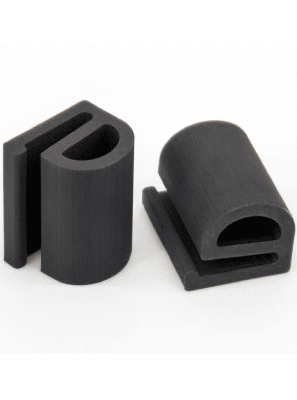
LOCTITE® IND402
Elastomer
This material maintains excellent tensile strength with high energy return and does not require secondary thermal post-processing.
Full Description
E-IND402 is a single component elastomer material with excellent green strength and does not require thermal post-processing.
Key Features:
- Elastomeric behaviour
- High resilience
- Good rebound performance
Specs
- Hardness: Shore A 76
- Tear Strength: 28 kN/m
- Elongation at Break: 230%
- Tensile Stress at Break: 5.5 MPa
Application
Ideal for elastomer applications that require lattice structures, such as vibration isolators.
- Aerospace
- Automotive
- Consumer Goods
- Manufacturing
Technology/Process
- DLP (Digital Light Processing)
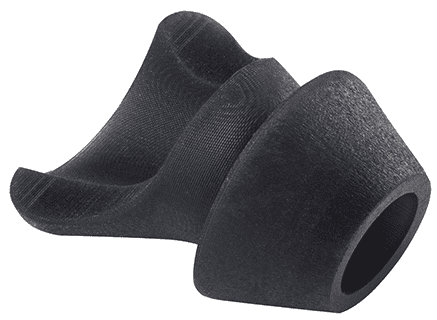
Soft ToughRubber™ | Adaptive 3D
Elastomer
Soft ToughRubber™ delivers silicone’s feel and mechanical properties with the ability to 3D print at high resolution.
Full Description
Key Features:
- One-part, one-pot (no mixing required)
- Soft AM photopolymer (Shore A 28.6)
- Silicone/TPE feel
- High strain, tensile strength, and toughness
- Exceptional surface finish
- Large part size possible, high resolution, smooth surface
- Available in black colour
Specs
- Digital Light Processing Technology
Application
- Audio earbuds
- Wearable electronics
- Anatomical medical models
Technology/Process
- DLP Technology
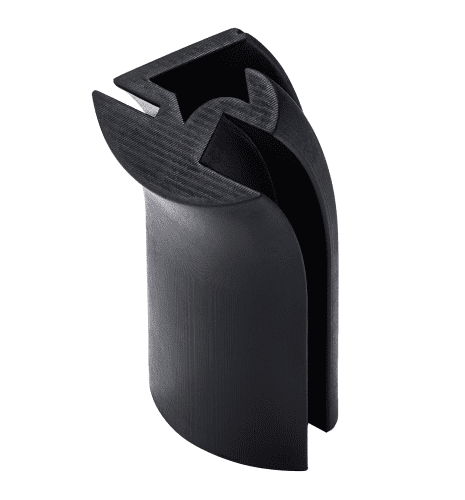
Elastic ToughRubber™ 70 | Adaptive3D
Elastomer
ETR70 is a tough, high-strength rubber with shore A70 hardness and extremely high elongation material, ideal for the rubber, polyurethane, and foam industries.
Full Description
This material may be used as an EVA ( Ethylene-Vinyl Acetate) rubber substitute for high-quality 3D prints that are tough and flexible as well as usable and functional. Excellent for vibration isolation parts, ETR70 has exceptional damping properties and excellent elongation, which makes it great for applications like gaskets and housings.
Key Features:
- One-part, one-pot (no mixing required)
- Extremely high elongation
- Extremely tough
- Feels and performs like rubber
- Large part size possible, high resolution, smooth surface
- Available in black colour
Specs
- Hardness: Shore A 70
- Tear Strength: 31 kN/m
- Elongation at Break: 400%
- Tensile Stress at Break: 7.6 MPa
Application
- Aerospace
- Automotive
- Consumer Goods
- Manufacturing
Technology/Process
- DLP (Digital Light Processing)
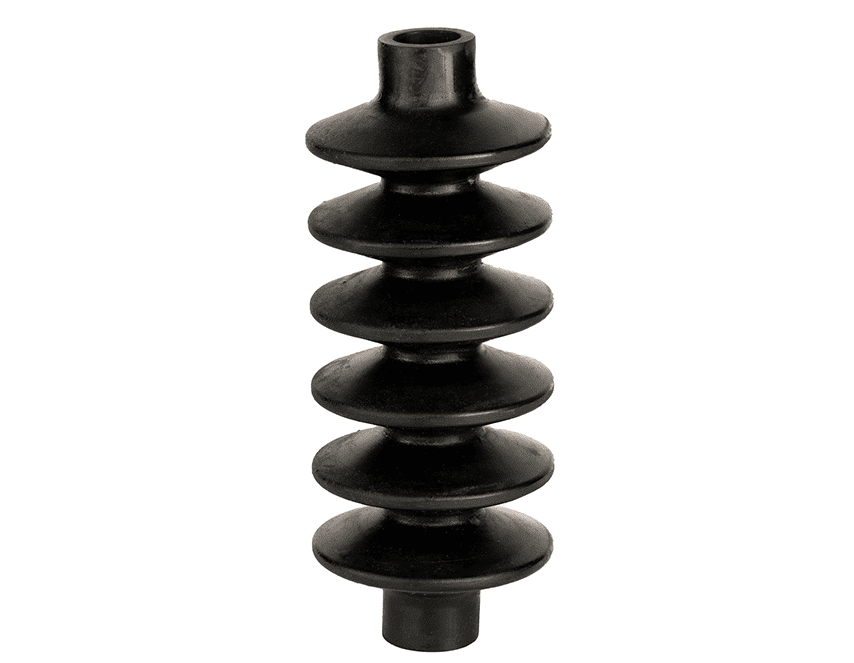
Elastic ToughRubber™ 90 | Adaptive3D
Elastomer
ETR 90 is a high-strength rubber material. It is the toughest 3D printing elastomer on the market that can mimic the leading injection molded thermoplastic polyurethanes.
Full Description
Key Features:
- One-part, one-pot (no mixing required)
- High elongation
- Extremely tough
- Feels and performs like rubber
- Large part size possible, high resolution, smooth surface
- Available in black colour
Specs
- Hardness: Shore A 90
- Tear Strength: 38 kN/m
- Elongation at Break:190%
- Tensile Stress at Break: 14 MPa
Application
- Aerospace
- Automotive
- Consumer Goods
- Manufacturing
- Dampening components
- Seals & baffles
Technology/Process
- DLP (Digital Light Processing)
(FDM) Fused Deposition Modeling
Fused Deposition Modeling (FDM), is the most accessible and widely used form of 3D printing. Ideal for rapid prototyping, building complex geometries, and producing functional parts.
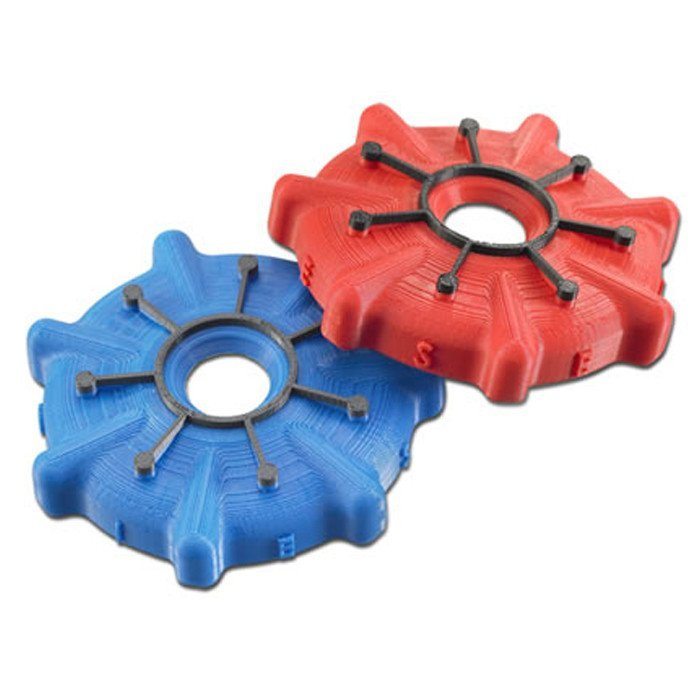
ABSPlus
ABSplus for Mechanical Strength and Available in Many Colors
Stratasys ABSPlus is an FDM thermoplastic with production-grade durability in a wide range of colors for concept modeling and rapid prototyping. It has stability over time, therefore, it can also be used for production parts.
Full Description
ABSPlus is a versatile and tough 3D printing material, resistant to impact due to its strong and durable characteristics. 3D printed parts with this thermoplastic require hands-free soluble support.
Available in 9 colors:
- white
- ivory
- black
- dark grey
- dark blue
- red
- fluorescent yellow
- nectarine
- olive
Specs
- Tensile Strength, Yield: 31 MPa
- Tensile Modulus: 2200 MPa
- Heat Deflection Temperature (HDT) at 66 psi: 96℃
- Impact Toughness: IZOD Impact, notched, 106 J/m XZ axis
Application
- General-purpose prototyping
- Concept models
- Functional prototypes
- Jigs and fixtures
- Production parts
Technology/Process
Fused Deposition Modeling (FDM )
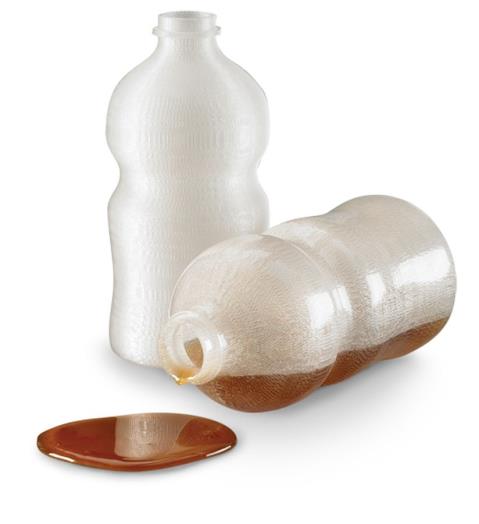
ABSi
Translucent Prototypes with ABSi 3D Printing Thermoplastic
Stratasys ABSi™ is an ideal material for conceptual modeling, functional prototyping and direct digital manufacturing. ABSi gives you parts that are visually unique, dimensionally accurate, durable and hold their shape over time.
Full Description
Its strength is superior to standard ABS, and the translucent nature of ABSi is beneficial for monitoring material flow and light transmission, most commonly used for medical and automotive applications.
Available colors: Translucent Amber, Translucent Red and Translucent Natural
Specs
-
- Tensile Strength: 37 MPa (5400 psi)
- Tensile Modulus: 1920 MPa (277,000 psi)
- Glass Transition Temperature (Tg): 116°C (240°F)
- Heat Deflection Temperature (HDT) at 66 psi: 0.125″ unannealed
- Heat Deflection Temeprature (HDT) at 264 psi: 0.125″ unannealed
Application
- Functional Prototyping
- Conceptual Modelling
- Digital Manufacturing
Technology/Process
Fused Deposition Modeling (FDM)
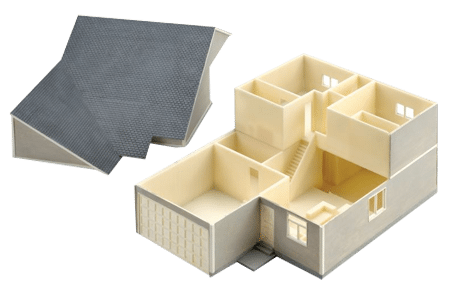
ABS-M30
Suitable for General-Purpose
3D Printing Use Cases
ABS-M30 is up to 25-70% stronger than standard ABS and is ideal for conceptual modeling, functional prototyping, manufacturing tools and end-use parts. Bring your product to market faster with this strong and affordable FDM material.
Full Description
The ABS-M30™ filament combines the design freedom of FDM® technology with the versatility and capability of ABS (acrylonitrile butadiene styrene) which is well-known for its strength and toughness, yet lightweight and resilient.
Features:
- Opaque
- Impact-resistance
- Strong and durable
- Dimensionally stable
- Hands-free support removal
Available in 6 colors:
- ivory
- white
- black
- red
- blue
- dark grey
Specs
- Ultimate tensile strength: 32 MPa
- Izod Unnotched: 7%
- Elongation at Break:
- 300 ohms (electrical resistance)
- 8.1% (XZ orientation) and 1.8% (ZX orientation)
Application
- General-purpose prototyping
- Concept models
- Functional prototypes
- Jigs and fixtures
- Production parts
Technology/Process
Fused Deposition Modeling (FDM)
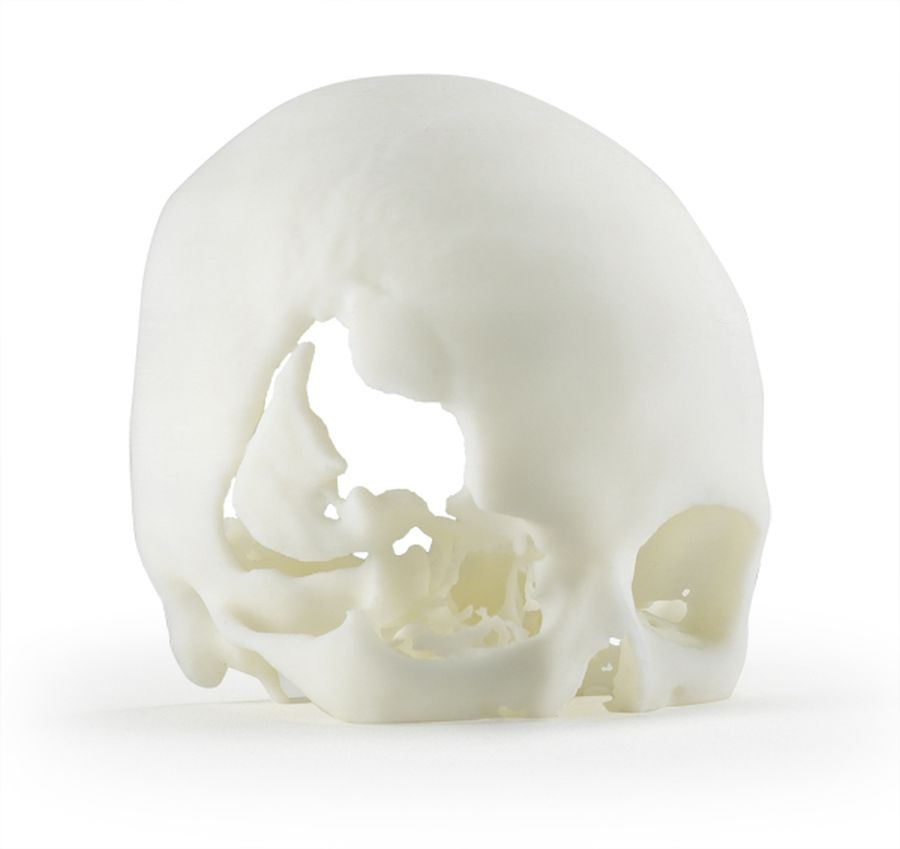
ABS-M30i
Biocompatible FDM material
ABS-M30i is a high-strength material well suited for the medical, pharmaceutical, and food packaging industries. Parts manufactured with ABS-M30i are biocompatible (ISO 10993 USP Class VI)* and can be gamma or EtO (Ethylene Oxide Processing) sterilized.
Full Description
Characteristics:
- Biocompatible
- Opaque
- Strong and durable
- Impact-resistant
- Dimensionally stable
- Accurate, reliable functional testing
Specs
- Tensile Strength: 31 MPa (XZ Axis), 26 MPa (ZX Axis)
- Tensile Modulus: 2180 MPa
- Heat Deflection Temperature (HDT) at 66 psi: 96 °C
- Impact Toughness: IZOD Impact, notched -160 J/m XZ axis
Application
- Medical device components
- Medical or pharmaceutical prototypes
- Functional prototypes
- Jigs and fixtures
- Manufacturing tooling
- Production parts
Technology/Process
Fused Deposition Modeling (FDM)
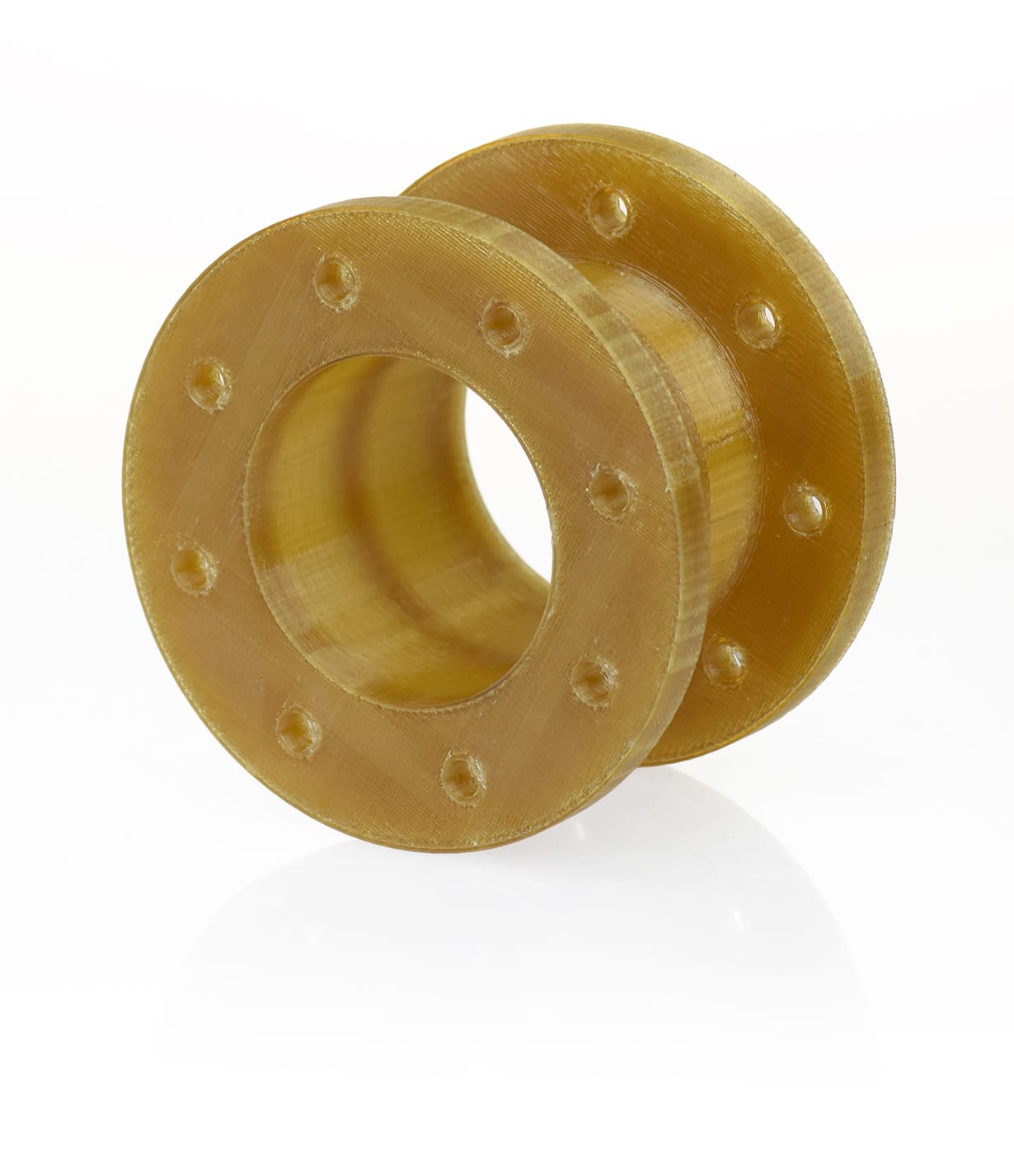
Antero 800NA
High-performance PEKK based material
Stratasys Antero 800NA is a PEKK-based (polyetherketoneketone) thermoplastic 3D printing material that holds outstanding mechanical properties making it ideal for use in aircraft, space and manufacturing applications.
Full Description
FDM Antero™ 800NA gives new opportunities for chemical-resistant 3D printed parts. A majority of thermoplastics tend to fail when they come in contact with fuel, hydraulic fluids, or other chemicals. However, FDM Antero™ 800NA, a PEKK proprietary blend, solves these challenges with excellent mechanical properties and the highest chemical resistance available.
Advantages:
- Excellent mechanical properties
- Design freedom
- Chemical resistance
- Low outgassing properties
- Heat resistance
- Less waste than CNC
- Cost advantages over PEKK
Specs
- Ultimate Tensile Strength (XZ axis): 90 MPa
- Heat Deflection (HDT) at 66 psi, ASTM D648: 163 °C (325.4 °F) – Annealed
- Heat Deflection (HDT) at 264 psi, ASTM D648: 157 °C (314.6 °F) – Annealed
- Glass Transition Temperature (Tg), ASTM D7426-08: 151 °C (303.8 °F)
Application
For aircraft components exposed to jet fuel, oil and hydraulic fluid, spacecraft parts that demand low outgassing and chemical-resistant industrial parts.
- Prototyping
- Tooling
- Production Parts
- Aircraft, Space, and Manufacturing Applications
Technology/Process
Fused Deposition Modeling (FDM)
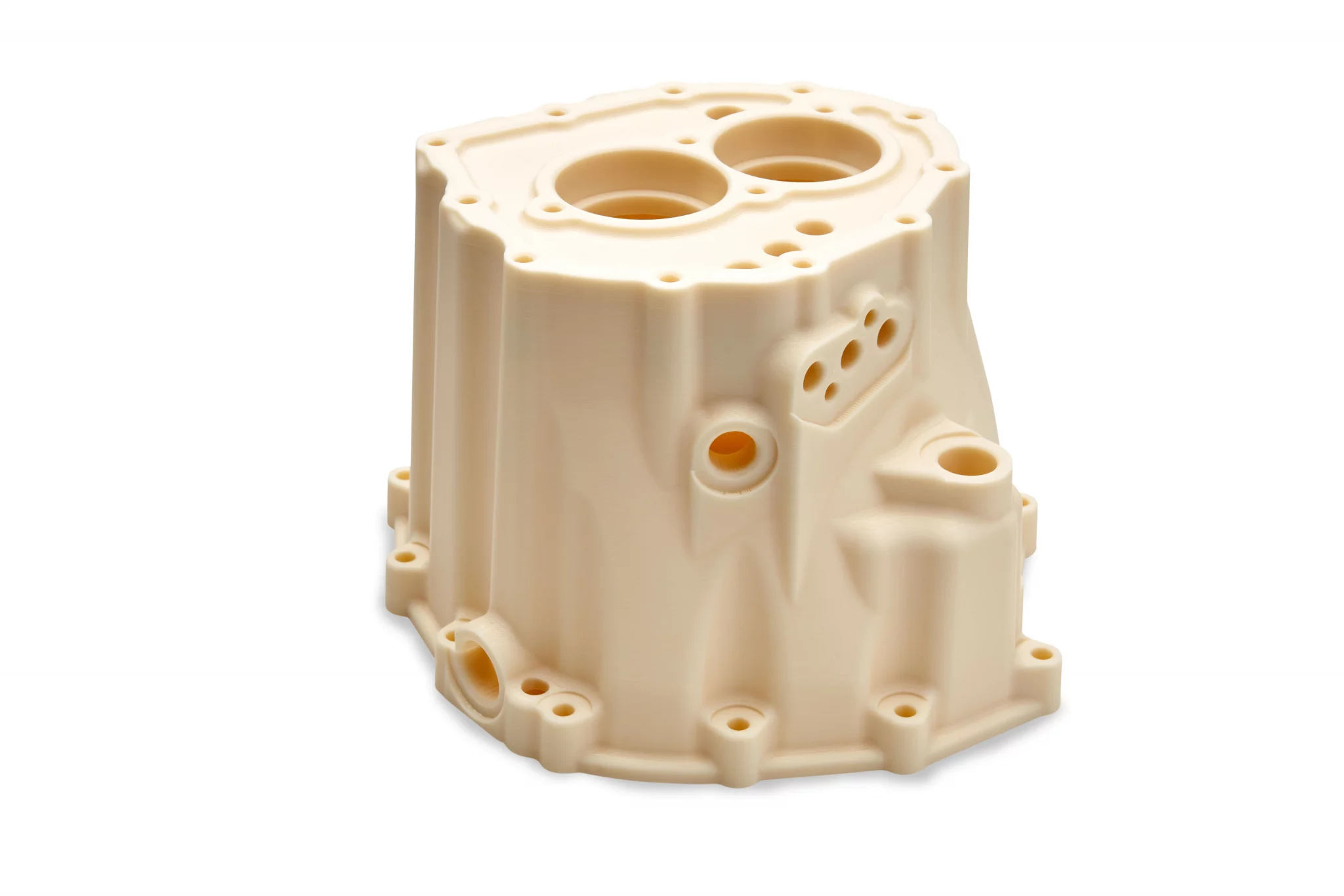
ASA
Material: Production-grade thermoplastic
With ASA (acrylonitrile styrene acrylate) FDM® filament you can build consistently high-quality parts, with exceptional UV stability and the best aesthetics. It is UV-resistant and is suited for end-use parts for outdoor commercial and infrastructure use.
Full Description
- Main characteristics:
- Opaque
- Strong and durable
- UV-stable
- Dimensionally stable
- Ten colours
- Can be smoothed to achieve the gloss of injection-moulded parts
Specs
- Izod Impact, Unnotched: 321 J/m
- Heat Deflection Temperature (HDT): 98ºC
- Flexural Strength:
- 60 MPa XZ axis
- 48 MPa ZX axis
- Tensile Strength:
- 29 MPa XZ axis
- 27 MPa ZX axis
- Ultimate Tensile Strength: 33 MPa
- Elongation at Break: 9%
Application
- Prototyping
- Jigs & Fixtures
- Outdoor commercial & infrastructure use
- Low-volume production parts
Technology/Process
- Fused Deposition Modeling (FDM)
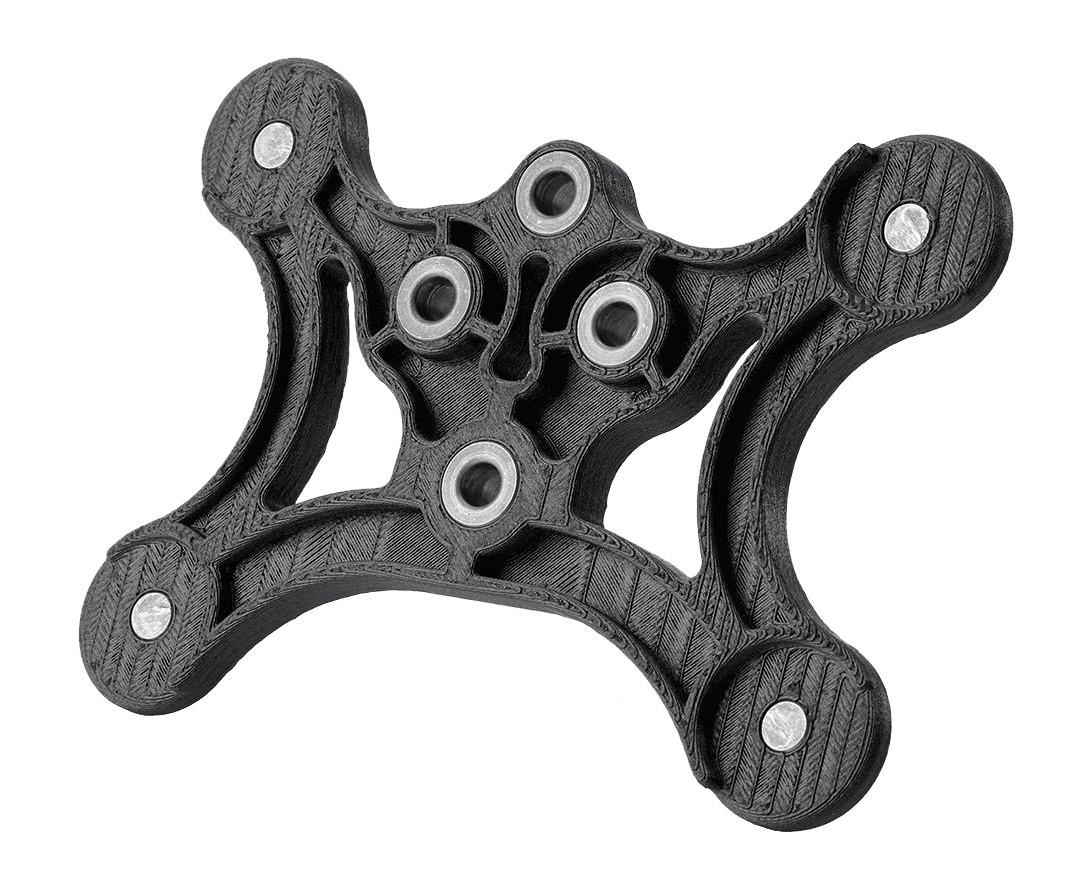
FDM Nylon 12CF
Material: Carbon-filled thermoplastic
FDM® Nylon 12CF™ is a PA12 (polyamide 12) thermoplastic filament reinforced with chopped carbon fiber, 35% by weight.
Full Description
It has the highest flexural strength of any FDM thermoplastic, resulting in the highest stiffness-to-weight ratio. The combination of high strength, stiffness and lightweight, makes it an optimal replacement for heavier metal components.
Specs
- XZ Axis orientation:
- Flexural Strength: 142 MPa
- Tensile Strength: 76 MPa
Application
Typical applications include:
- strong, lightweight tooling, functional prototyping and select end-use parts.
Technology/Process
- Fused Deposition Modeling (FDM)
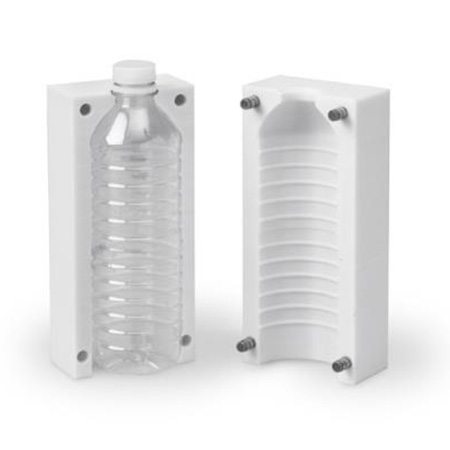
Polycarbonate (PC)
Material: Polycarbonate 3D printing filament
PC (Polycarbonate) is characterized by its high strength and impact resistance, coupled with dimensional stability and heat resistance.
Full Description
PC’s attributes make it a good choice for 3D printed prototypes, parts and tools that demand higher material properties than ABS or ASA.
FDM PC is available in white and is compatible with both breakaway and soluble support materials.
Specs
- Tensile Yield Strength (XZ axis): 60 MPa
- Izod Impact, Notched:
- 73 J/m XZ axis
- 28 J/m ZX axis
- Heat Deflection Temperature (HDT): 138°C
- Flexural Strength:
- 89 MPa XZ axis
- 68 MPa ZX axis
Application
- Functional prototyping
- Concept models, early prototyping and functional prototypes.
- Manufacturing tooling
- Jigs, fixtures and manufacturing aids.
- Production parts
- Low-volume production and highly customized parts.
Technology/Process
- Fused Deposition Modeling (FDM)
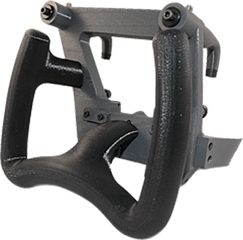
PC-ABS
Material: Industrial thermoplastic
PC-ABS (polycarbonate-ABS) offers the most desirable properties of both materials – PC’s superior strength and heat resistance, and ABS’ flexibility.
Full Description
- Main Highlights:
- Best impact resistance of any FDM material
- Excellent feature definition and surface finish
- Hands-free support removal
- Available in black colour only
Specs
- Izod Impact, Notched: 214 J/m XZ axis
- Heat Deflection Temperature (HDT): 110ºC
- Flexural Strength:
- 59 MPa XZ axis
- 41 MPa ZX axis
- Tensile Strength:
- 29 MPa XZ axis
- 28 MPa ZX axis
Application
- Automotive parts and prototype, electronics and telecommunications
- Functional prototypes
- Jigs and fixtures
- Manufacturing tooling
- Production parts
Technology/Process
- Fused Deposition Modeling (FDM)
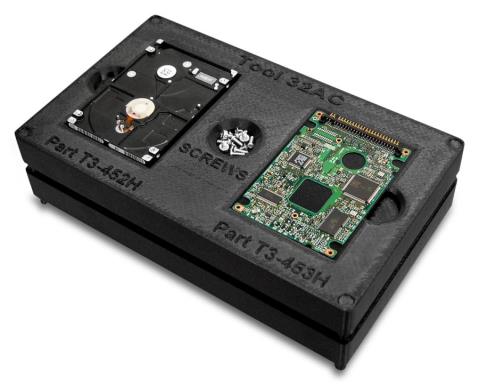
ABS-ESD7
Static-Dissipative ABS Material
ABS-ESD7 is the best FDM printing material for printing with a static-dissipative thermoplastic. It has the strength and durability of the ABS with carbon to provide electrostatic dissipative (ESD) properties.
Full Description
ABS-ESD7 has the strength and durability of the ABS with carbon to provide electrostatic dissipative (ESD) properties.
For applications where a static charge could damage components, impair the performance, or cause an explosion, ABS-ESD7 offers a safe and suitable FDM material for printing. This prevents a build-up of static electricity so that it doesn’t produce a static shock or cause other materials like powders, dust, and fine particles to stick to it.
Specs
- Ultimate Tensile Strength: 35 MPa
- Elongation at Break: 2-3%
- Izod Impact, Notched: 28 J/m XZ axis
- Heat Deflection (HDT) at 264 psi, 0.125″ unannealed: 82℃ or 180℉
- Heat Deflection (HDT) at 66 psi, 0.125″ unannealed: 96℃ or 204℉
- Volume Resistivity (ASTM D257): 3.0 x 109 – 4.0 x 1010 ohm-cm
Application
- Prototypes, Fixtures, and Support Equipment for Electronics:
- End-use components
- Electronic products
- Assemblies of electronic components
- Concept models for prototypes for static-sensitive applications
- Tooling: jigs and fixtures and support tooling used in static-critical fabrication and packaging applications
Technology/Process
Fused Deposition Modeling (FDM)
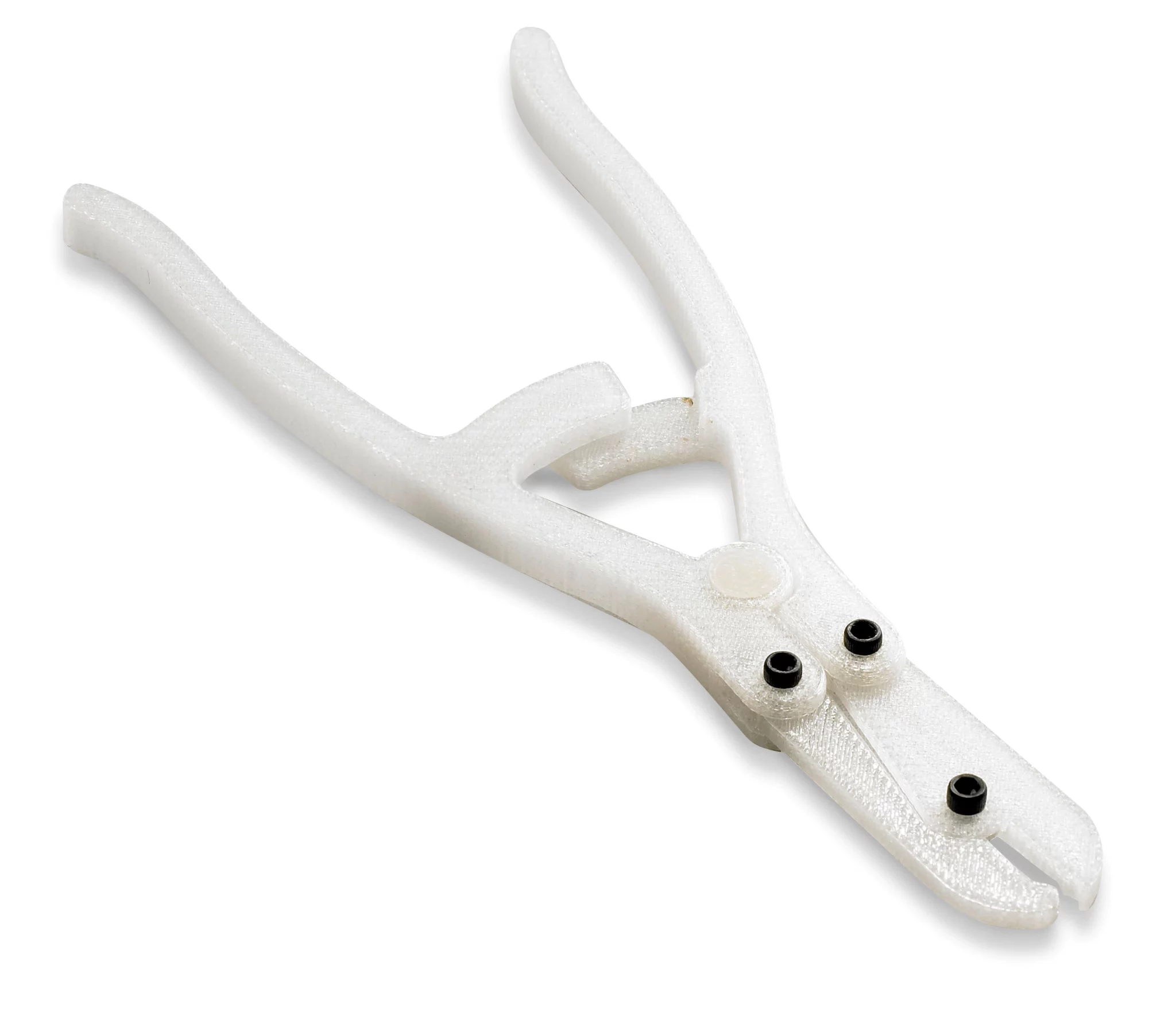
PC-ISO
Material: Biocompatible polycarbonate
PC-ISO is a biocompatible polycarbonate material that is compliant with ISO 10993 and USP Class VI. It can be gamma radiation or ethylene oxide (EtO) sterilized.
Full Description
PC-ISO is a bio-compatible thermoplastic that provides medical, pharmaceutical, and food-packaging designers the ability to print strong, heat-resistant models, tools, and fixtures straight from CAD.
Available in two colours:
- white
- translucent natural
Specs
- Izod Impact, Notched: 107 J/m XZ axis
- Heat Deflection Temperature (HDT): 133ºC
- Flexural Strength: 90 MPa XZ axis
- Tensile Strength: 57 MPa XZ axis
Application
- Food and drug packaging
- Medical device manufacturing
- Jigs and fixtures
- Tooling
- Strong production parts
- Other applications requiring higher strength and sterilization
Technology/Process
- Fused Deposition Modeling (FDM)
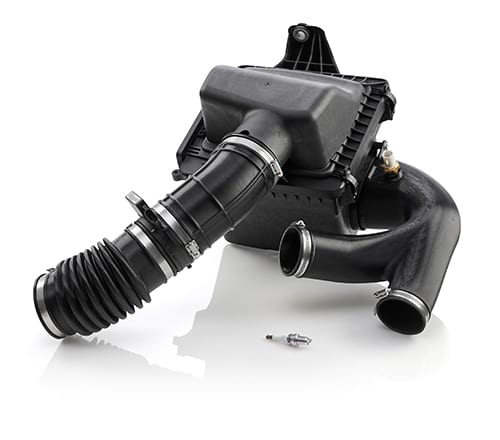
FDM TPU 92A Elastomer
Material: Thermoplastic Polyurethane
FDM TPU 92A is a thermoplastic polyurethane with a Shore A value of 92. The material ensures high elongation, superior toughness, durability and abrasion resistance.
Full Description
This thermoplastic polyurethane brings the benefits of elastomers to FDM 3D printing and offers the capability to quickly produce large and complex elastomer parts.
Specs
- Tensile Strength:
- 16.8 MPa (XY Axis)
- 17.4 MPa (XZ Axis)
- Elongation at Break:
- 552% (XY Axis)
- 482% (XZ Axis)
- Tear Strength:
- 84.6 N/mm (XY Axis)
- Shore hardness: 92, Scale A
Application
- Rapid Prototyping
- Prototype elastomeric applications with the speed and design freedom of FDM
- Production Parts
- Strong and durable end-use parts, with complete design freedom and flexible supply chains
- Functional Testing
- 3D printed parts that are ready for testing, and mimic the end part
Technology/Process
- Fused Deposition Modeling (FDM)
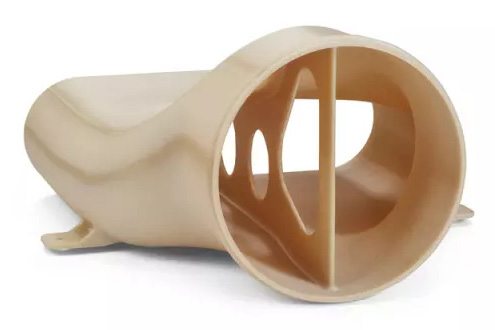
ULTEM™ 9085
Certified for High Performance & FST
ULTEM™ 9085 resin filament is a PEI (polyetherimide) thermoplastic FDM material. It features a high strength-to-weight ratio and high thermal and chemical resistance.
Full Description
ULTEM™ 9085 resin CG meets stringent test criteria and retains traceability required by the aerospace industry as well as railway industry standards for flame, smoke, and toxicity (FST) characteristics.
Available colors: natural ad black.
Specs
-
- Ultimate Tensile Strength: 69 MPa (9950 PSI)
- Heat Deflection Temperature:153℃ (307℉)
Application
- Rapid prototyping
- Tooling
- Production parts
- Aerospace interior components
- FST-rated components
Technology/Process
- Fused Deposition Modeling (FDM)
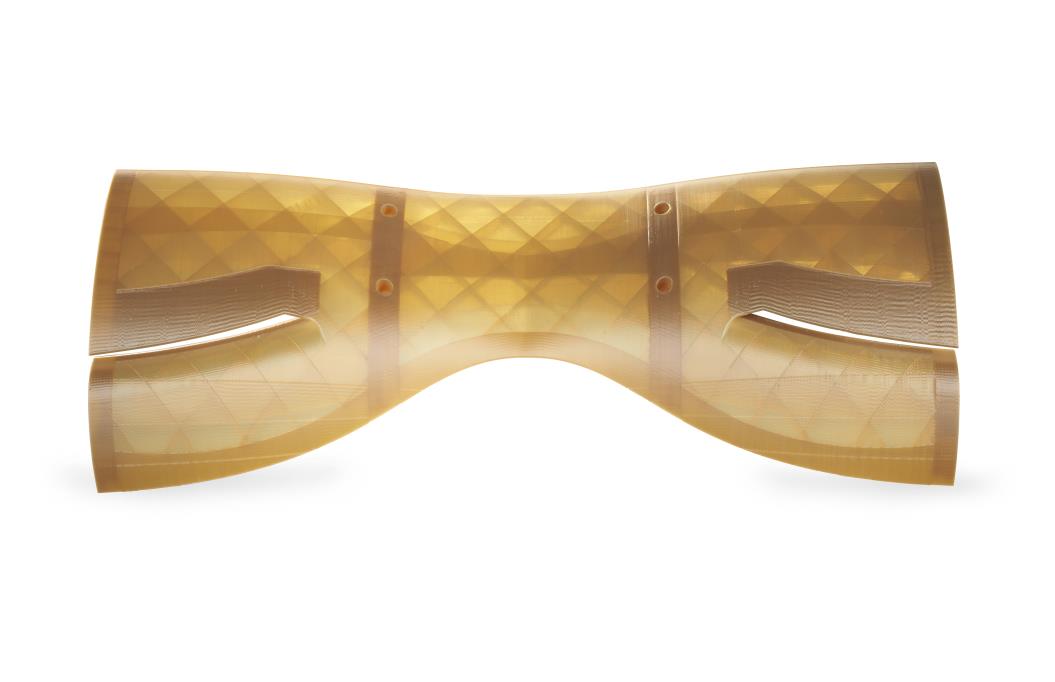
ULTEM™ 1010
Material: High-performance & biocompatible
ULTEM™ 1010 offers the highest heat resistance, chemical resistance and tensile strength of any FDM thermoplastic and is certified for food contact and bio-compatibility.
Full Description
The certified grade of this material is biocompatible and approved for food contact with NSF 51 and ISO 10993/USP Class VI certifications.
Specs
- Izod Impact, Notched: 41 J/m XZ axis
- Heat Deflection Temperature (HDT): 216ºC
- Flexural Strength:
- 144 MPa XZ axis
- 77 MPa ZX axis
- Tensile Strength:
- 64 MPa XZ axis
- 42 MPa ZX axis
Application
Easily produce large custom tools for:
- metal
- plastic
- composite part fabrication
- medical tools such as surgical guides that can withstand steam autoclaving
Technology/Process
- Fused Deposition Modeling (FDM)
PolyJet 3D Printing
3D print parts with smooth, polished, and highly-accurate details. Renowned for its unparalleled realism and breathtaking aesthetics, Polyjet is excellent for realistic healthcare models and rapid prototypes with multi-materials and multi-color.
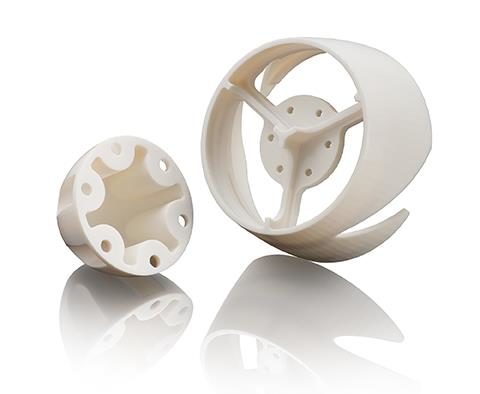
Digital ABS Plus
Material: ABS Plastic
Digital ABS Plus simulates plastics used in production by combining high-temperature resistance with high toughness.
Full Description
Digital ABS is well-suited for applications that require high-impact resistance and shock absorption. You can print parts with superior rigidity and toughness, in walls thinner than 1.2mm (0.047 in).
Specs
- Izod Impact, Notched: 90-115 J/m
- Heat Deflection Temperature (HDT) @ 0.45 MPa: 58-68ºC
- Flexural Strength: 55-75 MPa
- Tensile Strength: 45-60 MPa
Application
- Functional prototypes
- Snap-fit parts for high or low-temperature usage
- Electrical parts, casings, mobile telephone casings
- Engine parts and covers
- Manufacturing tooling
- Injection moulds
Technology/Process
- PolyJet 3D Printing Technology
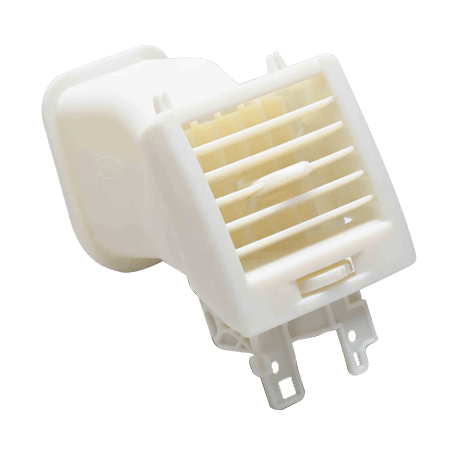
Helios
Material: High-Temp. Photopolymer
Polyjet’s high-temperature photopolymers (Helios) print heat-resistant parts that reflect the thermal performance of standard plastics.
Full Description
High-temperature material boasts a heat deflection temperature of 63-67 °C upon removal from the printer – thermal post-treatment can increase this to 75-80 °C. When combined with TangoPlus (rubber-like) materials, you can produce models with unique material combinations, opacities, hues, and hardness.
Specs
- Izod Impact, Notched: 14-16 J/m
- Heat Deflection Temperature (HDT): 63-67°C
- Flexural Strength:110-130 MPa XZ axis
- Tensile Strength: 70-80 MPa XZ axis
Application
- Form, fit and thermal functional testing
- High-definition models requiring excellent surface quality
- Exhibition models that endure strong lighting conditions
- Post-processing including painting, gluing or metallization processes
- Taps, pipes and household appliances
- Hot air and hot water testing
Technology/Process
- PolyJet 3D Printing Technology
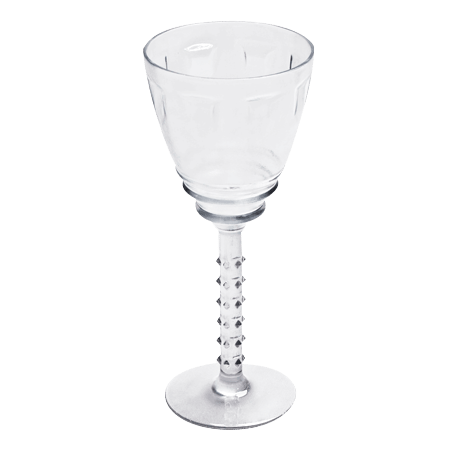
VeroClear
Material: Transparent photopolymer
VeroClear Transparent Polyjet 3D printing material simulates PMMA (polymethyl methacrylate), commonly known as acrylic.
Full Description
Using material from the VeroClear (RGD810 and RGD720) family, easily simulate clear plastics that combine high dimensional stability with surface smoothness. The transparent material can also be rigid and combined with black materials to create artistic patterns and a variety of translucent shades.
VeroClear allows designers and engineers to produce clear and tinted products.
Specs
- Tensile Strength: 50-65 MPa, ASTM D638-03
- Modulus of Elasticity: 2000-3000 MPa, ASTM D638-04
- Elongation at Break: 10-25%, ASTM D638-05
- Flexural Strength: 75-110 MPa, ASTM D790-03
- Flexural Modulus: 2200-3200 MPa, ASTM D790-04
- Izod Notched Impact: 20 – 30 J/m, ASTM D256-06
- Shore Hardness D, 83-86
Application
- Form and fit testing of see-through parts like glass consumer products, eyewear, light covers and cases
- Visualization of liquid flow
- Medical applications
- Artistic and exhibition modelling
Technology/Process
- PolyJet™ 3D Printing Technology
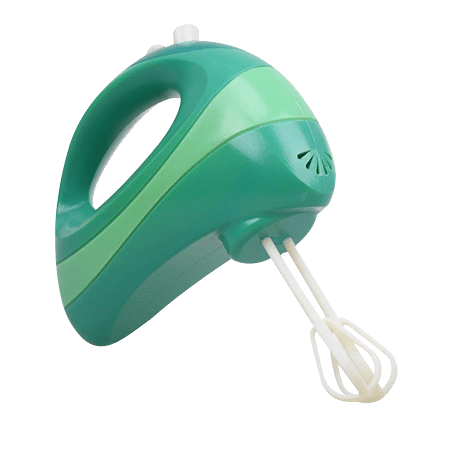
Vero™
Material: Multi-color & multi-purpose photopolymer
The Vero™ family includes the multi-colour rigid collection of materials. They’re ideal for prototyping and tooling.
Full Description
Vero is a Rigid Opaque photopolymer that provides excellent detail visualization and can be blended with other photopolymers to vary hardness, flexibility, translucency or heat resistance. The Vero photopolymers ensure strength and stiffness, as well as fine detail.
It is available in blue, white, black, gray, cyan, magenta and yellow.
Specs
- Izod Impact, Notched: 20-30 J/m
- Heat Deflection Temperature, HDT: 45-50ºC
- Flexural Strength: 75-110 MPa
- Tensile Strength: 60-70 MPa
Application
- Form and fit testing
- Moving parts and assembled parts
- Sales, marketing and exhibition models
- Assembly of electronic components
- Silicon moulding
Technology/Process
- PolyJet™ 3D Printing Technology
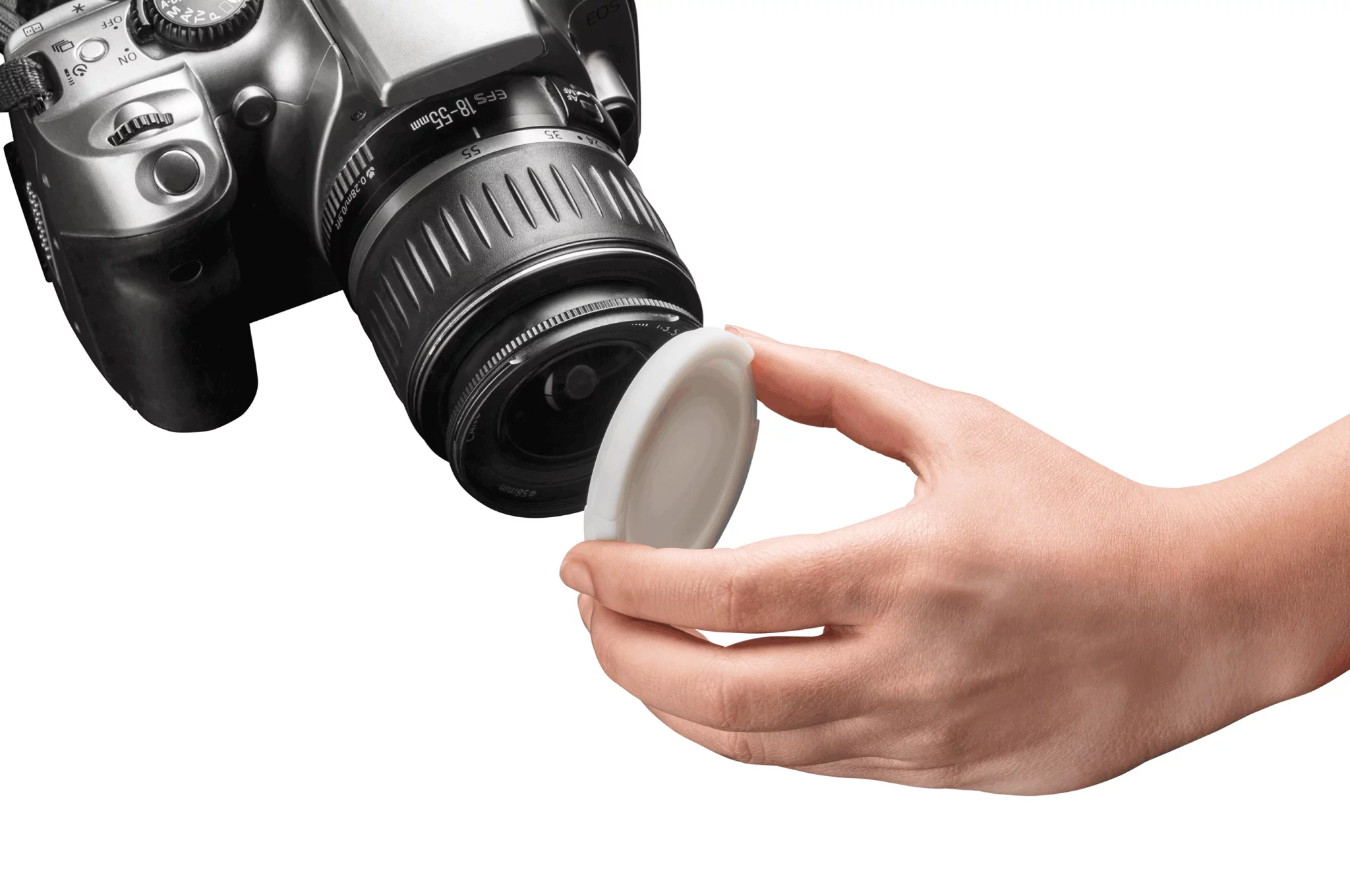
Rigur (RGD450)
Material: Simulated polypropylene
Rigur (RGD450) acts as an advanced polypropylene material substitute that offers durability and great surface finishes. Simulated Polypropylene material is tough, flexible and durable.
Full Description
Use Rigur in any office-friendly environment to gain reliable performance and stable prototypes. Durus (RGD430) is the original Simulated Polypropylene material that exhibits great impact resilience and an elongation at break of 44%.
Specs
- Izod Impact, Notched: 30-35 J/m
- Heat Deflection Temperature, HDT: 49-54°C
- Flexural Strength: 52-59 MPa
- Tensile Strength: 40-45 MPa
Application
- Reusable containers and packaging
- Flexible, snap-fit applications and living hinges
- Toys, battery cases, laboratory equipment
- Loudspeakers and automotive components
Technology/Process
- PolyJet™ 3D Printing Technology
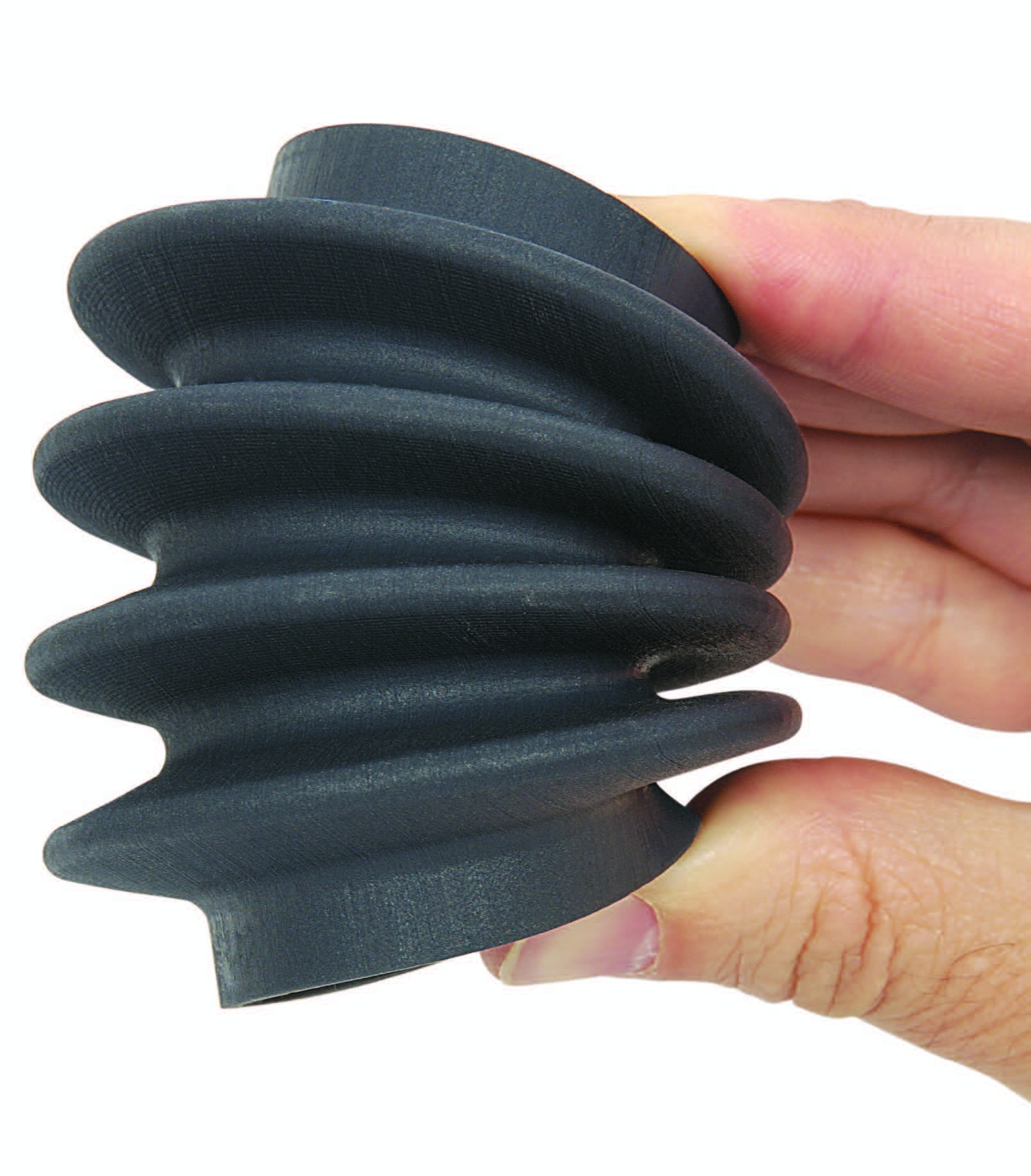
Tango & TangoPlus
Material: Rubber-like material
Flexible Tango™ material exhibits rubber-like qualities to simulate soft-touch coatings, non-slip surfaces, over-moulding grips, shoe soles and other applications requiring flexible characteristics.
Full Description
Tango material is available in black, gray and translucent colours, and in a range of Shore A hardness values comparable to rubber bands, tire treads and shoe heels.
Tango and TangoPlus simulate thermoplastic elastomers with flexible, rubber-like qualities.
Specs
- TangoPlus
- Shore Hardness: 26-28 Scale A
- Tensile Tear Resistance: 2-4 kg/cm
- Tensile Strength: 0.8-1.5 MPa
- Elongation at Break: 170-220%
Application
- Rubber surrounds and over-moulding
- Soft-touch coatings and nonslip surfaces
- Knobs, grips, pulls, handles, gaskets, seals, hoses and footwear
- Exhibition and communication models
Technology/Process
- PolyJet™ 3D Printing Technology
(SLA) Stereolithography
SLA (Stereolithography) is a 3D printing process that creates parts by curing layers of liquid resin with a UV laser. It is perfect for producing high-resolution parts with smooth surface finishes and fine details.
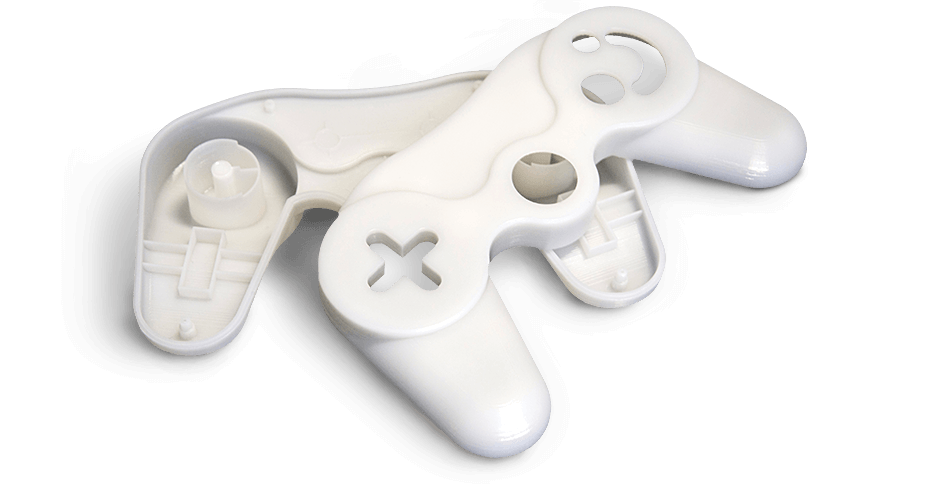
Accura Xtreme
Material: For end-use plastics
Ultra-tough plastic (SLA) 3D printing material that replaces traditional CNC-machined polypropylene and ABS.
Full Description
With physical properties similar to end-use plastics such as ABS and Polypropylene, Accura Xtreme plastic is excellent for functioning prototypes and short-run production projects. Its excellent durability, accuracy and aesthetics make a great model for mimicking the appearance of a final production part.
Specs
- Impact Strength: 35-52 J/m
- Heat Deflection Temperature, HDT:
- 62°C @ 66 PSI
- 54°C @ 264 PSI
- Flexural Strength: 51-71 MPa
- Tensile Strength: 38-44 MPa
Application
- Form, fit and function prototypes
- Durable and challenging assemblies
- Snap-fit assemblies
- Assemblies with self-tapping screws
- Tough enclosures
- Consumer electronic components
- General-purpose prototyping
Technology/Process
- Stereolithography (SLA)
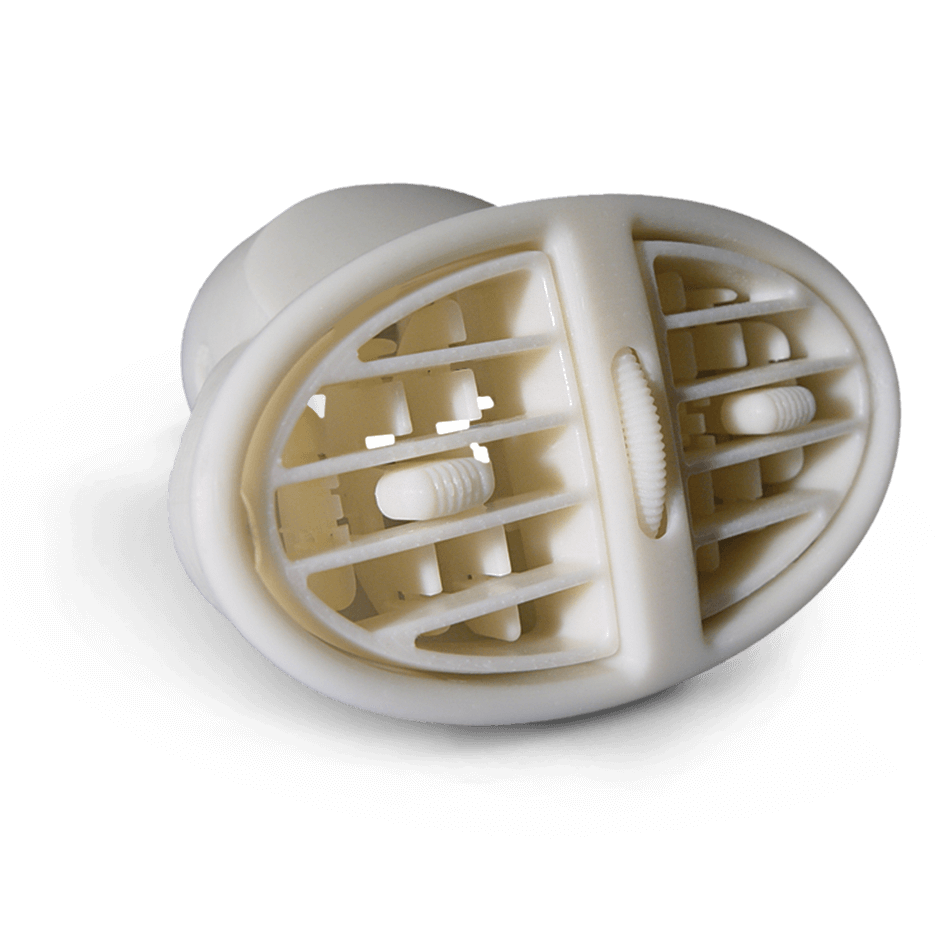
Accura 25
Material: Polypropylene-like material
Accura 25 is an easy-to-use SLA printing material that allows users to simulate the properties and aesthetics of polypropylene.
Full Description
- Simulate the aesthetic of polypropylene
- High flexibility and durability
- Excellent resolution and accuracy
- Master patterns for vacuum casting
Specs
- Impact Strength: 19-24 J/m
- Heat Deflection Temperature, HDT:
- 58-63°C @ 66 PSI
- 51-55°C @ 264 PSI
- Flexural Strength: 55-58 MPa, ASTM D790
- Tensile Strength: 38 MPa, ASTM D638
Application
- Snap-fit assemblies
- Functional components for assemblies in automotive, consumer electronics
- Simulate injection moulded parts
- Concept and marketing models
Technology/Process
- Stereolithography (SLA)
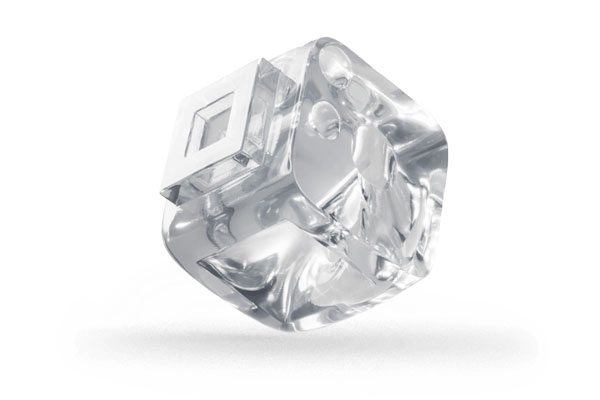
Accura ClearVue
Material: Transparent, polycarbonate-like
Accura ClearVue is a clear and colourless material, with exceptional detail and smooth surface finish, strength, durability and moisture resistance.
Full Description
High clarity plastic that simulates the properties and appearance of polycarbonate and ABS.
Specs
- ASTM D638
- Tensile Strength: 46-53 MPa
- Tensile Modulus: 2270-2640 MPa
- Elongation at Break: 3-15%
- ASTM D790
- Flexural Strength: 72-84 MPa
- Flexural Modulus: 1980-2310 MPa
- Impact Strength: 40-58, ASTM D256
Application
- Prints requiring high clarity
- head lamps
- lenses
- visualization models
- transparent assemblies
- Medical models and devices
- General-purpose prototyping
- Concept and marketing models
Technology/Process
- Stereolithography (SLA)
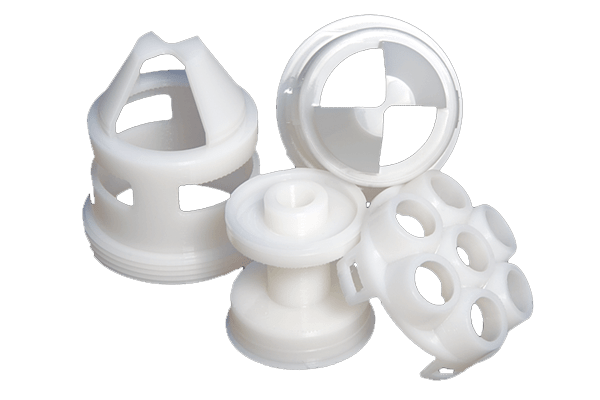
Accura 55
Material: ABS-like material
Accura 55 is a rigid and strong plastic used to stimulate and replace CNC-machined white ABS articles.
Full Description
Acurra 55’s mechanical properties allow printed models to serve as functional prototypes that are strong enough to simulate ABS without the need for moulding or machining. Its low viscosity allows for a simple cleaning and finishing process while increasing system throughput.
Specs
ASTM D638
-
- Tensile Strength: 63-68 MPa
- Tensile Modulus: 3200-3800 MPa
- Elongation at Break: 5-8%
- ASTM D790
- Flexural Strength: 88-110 MPa
- Flexural Modulus: 2690-3240 MPa
- Impact Strength: 12-22 J/m, ASTM D256
Application
- Short-run production parts
- Interior automotive components
- Testing of functional assemblies
- Concept and marketing models
Technology/Process
- Stereolithography (SLA)
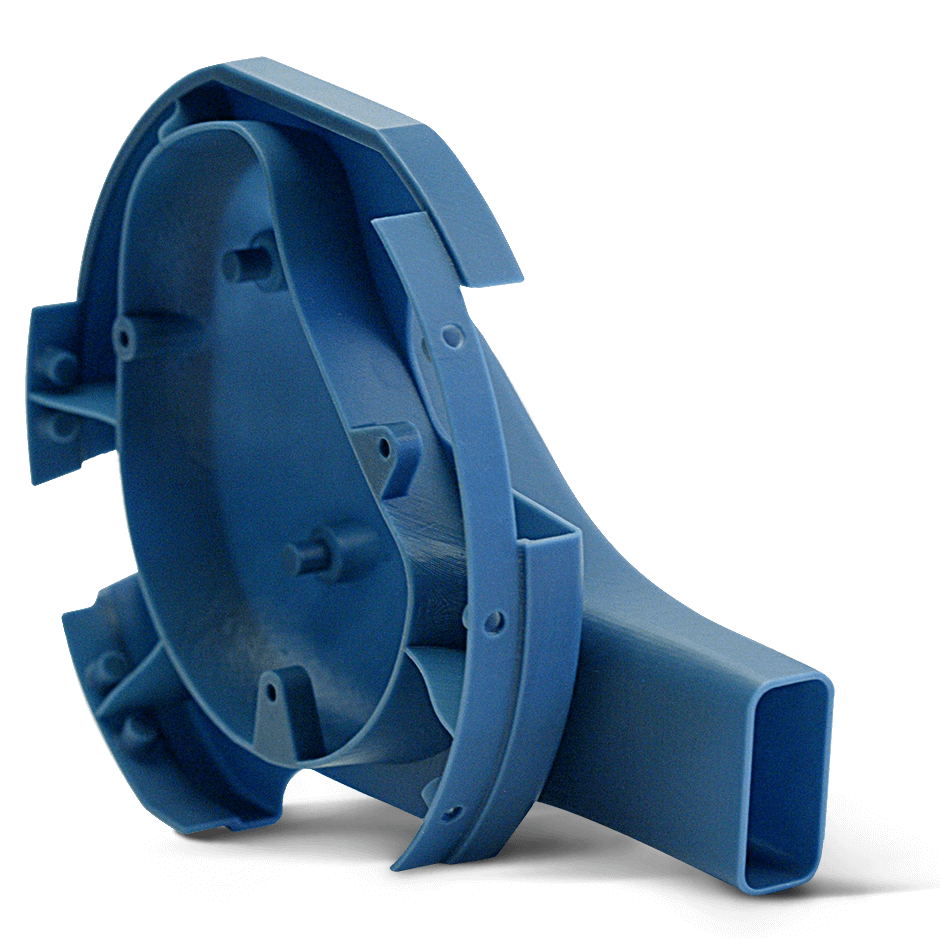
Accura Bluestone
Material: Composite material
Acurra Bluestone is a stiff SLA printing material with excellent thermal resistance ideal for applications that undergo high heat.
Full Description
Print with this material for applications that require high stiffness parts such as wind-tunnel test models, jigs, fixtures and lighting components.
Specs
- ASTM D638
- Tensile Strength: 66-68 MPa
- Tensile Modulus: 7600-11700 MPa
- Elongation at Break: 1.4-2.4%
- ASTM D790
- Flexural Strength: 124-154 MPa
- Flexural Modulus: 8300-9800 MPa
- Impact Strength: 13-17 J/m, ASTM D256
Application
- Assembly jigs and fixtures
- Wind-tunnel test models
- Electrical and mechanical components
- “Under-the-hood” automotive parts
Technology/Process
- Stereolithography (SLA)

Somos® Watershed XC 11122
Material: Clear Solution
Somos® Watershed XC 11122 is an easy-to-use, low viscosity, water-resistant stereolithography (SLA) resin for use in numerous applications.
Full Description
Somos® WaterShed XC 11122 mimics the look and feel of clear thermoplastics, such as ABS and PBT. It offers superior clarity and water resistance.
Specs
- Impact Strength: 25 J/m
- Heat Deflection Temperature, HDT:
- 50°C @ 66 PSI
- 49°C @ 264 PSI
- Flexural Strength: 68.7 MPa
- Tensile Strength: 50.4 MPa
Application
- Consumer products
- Fluid flow analysis
- Ductwork
- Investment casting
- Lenses
Technology/Process
- Stereolithography (SLA)
Selective Laser Sintering
Selective Laser Sintering (SLS) is a polymer powder additive manufacturing process that works by repeatedly spreading thin layers of polymer powder over a build platform and then using a high-power laser to selectively fuse (sinter) the particles together.
Metal Binder Jetting
Metal binder jetting consists of a multi-step process where parts are printed, depowdered, and sintered to achieve final metallurgic properties. With metal binder jetting you can achieve higher part volumes and better part economics when compared with traditional metal additive manufacturing processes.
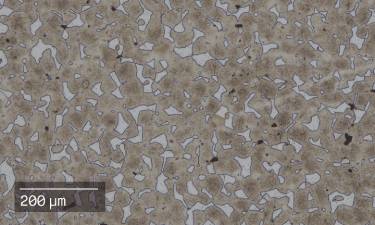
Desktop Metal | 17-4 PH Stainless Steel | Shop System
Material: 17-4 PH Stainless Steel
17-4 PH stainless steel is a precipitation hardening steel used in a wide range of industrial applications including those with mildly corrosive environments and high-strength requirements.
Specs
- Hardness
- Sintered: 26.4±1 MPa
- Heat-treated: 40.5±2 MPa
- Ultimate Tensile Strength:
- Sintered: 912±35 MPa
- Heat-treated: 1205±35 MPa
- Elongation at Break (%):
- Sintered: 5.9±2
- Heat-treated: 11.9±2
- Young’s Modulus (GPa)
- Sintered: 178±30
- Heat-treated: 185±20
Application
- Manufacturing machinery
- Chemical processing
- Food processing
- Pump components
- Valving
- Fasteners
- Jigs and fixtures
Technology/Process
Metal Binder-Jetting™ on the Desktop Metal Shop System
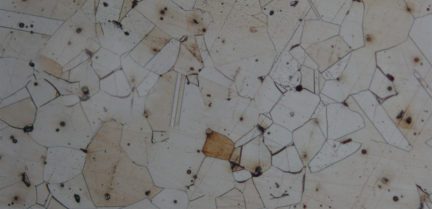
Desktop Metal | 316L Stainless Steel | Shop System
Material: 316L Stainless Steel
316L stainless steel is a fully austenitic, non-magnetic steel ideal for harsh environments and characterized by its corrosion resistance, performance at both high and low temperatures, and high ductility.
Specs
- Ultimate tensile strength – xy (MPa):
- Sintered: 505 ± 16
- Elongation – xy (%): 76±12
- Young’s modulus – xy (GPa): 195±4
- Hardness (HRB): 58±2
- Boil test (corrosion) ASTM F1089: Passed
- Copper sulfate test (corrosion) ASTM F1089: Passed
- Sulfuric acid test, MPIF 62 (corrosion): <0.005 g/dm²/day
Application
- Fluid transfer (e.g. manifolds)
- Chemical and petrochemical processing
- Food processing
- Laboratory equipment
- Medical devices
- Marine
- Jewelry
- Power generation
- Petroleum refining
- Water treatment
- Pulp and paper manufacturing
Technology/Process
Metal Binder-Jetting™ on the Desktop Metal Shop System
Bound Metal Deposition
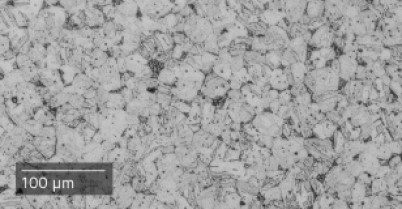
17-4 PH Stainless Steel
| Studio System 2
Material: 17-4 PH Stainless Steel
17-4 Stainless Steel is a precipitation hardening steel used in a wide range of industrial applications including those with mildly corrosive environments and high-strength requirements.
Specs
- XY axis
- As sintered:
- Yield Strength: 695 MPa
- Ultimate Tensile Strength: 925 MPa
- Elongation at Break: 5.3%
- Hardness (HRC): 26
- Density (g/cc): 7.56
- As sintered:
Application
- Manufacturing machinery
- Chemical processing
- Food processing
- Pump components
- Valving
- Fasteners
- Jigs and fixtures
Technology/Process
- Bound Metal Deposition™
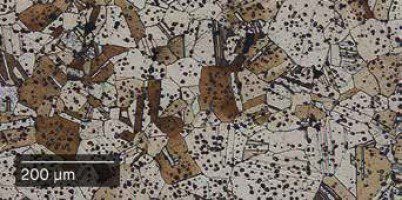
316L Stainless Steel
| Studio System 2
Material: 316L Stainless Steel
Characterized by its corrosion resistance and performance at both high and low temperatures, 316L stainless steel is a fully austenitic steel ideal for harsh environments.
Specs
- Sintered:
- Ultimate Tensile Strength: 533 MPa
- Yield Strength: 169 MPa
- Elongation: 66%
- Hardness (HRB): 66
- Density (relative): 97%
Application
- Chemical and petrochemical processing
- Food processing
- Laboratory equipment
- Medical devices
- Marine
- Jewelry
- Power generation
- Petroleum refining
- Water treatment
- Pulp and paper manufacturing
Technology/Process
- Bound Metal Deposition™
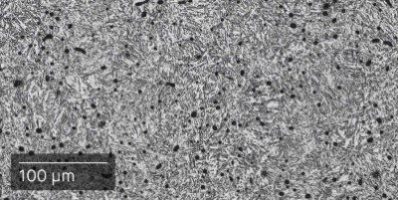
4140 Chromoly Steel
| Studio System 2
Material: 4140 Chromoly Steel
One of the most versatile steels, 4140 steel is characterized by its toughness, high fatigue strength, and abrasion and impact resistance.
Specs
- Yield Strength:
- Heat Treated: 1060 MPa
- Wrought (heat-treated): 1500 MPa
- Ultimate Tensile Strength:
- Heat Treated: 1450 MPa
- Wrought (heat-treated): 1990 MPa
- Elongation at Break:
- HeatTreated: 5.5%
- Wrought (heat-treated): 10%
- Hardness (HRC):
- Heat Treated: 40
- Wrought (heat-treated): 52
- Density:
- Heat Treated: 95%
- Wrought (heat-treated): 100%
Application
All-purpose steel industrial applications such as:
- Jigs and fixtures
- Automotive
- Bolts/Nuts
- Gears
- Steel couplings
Technology/Process
- Bound Metal Deposition™
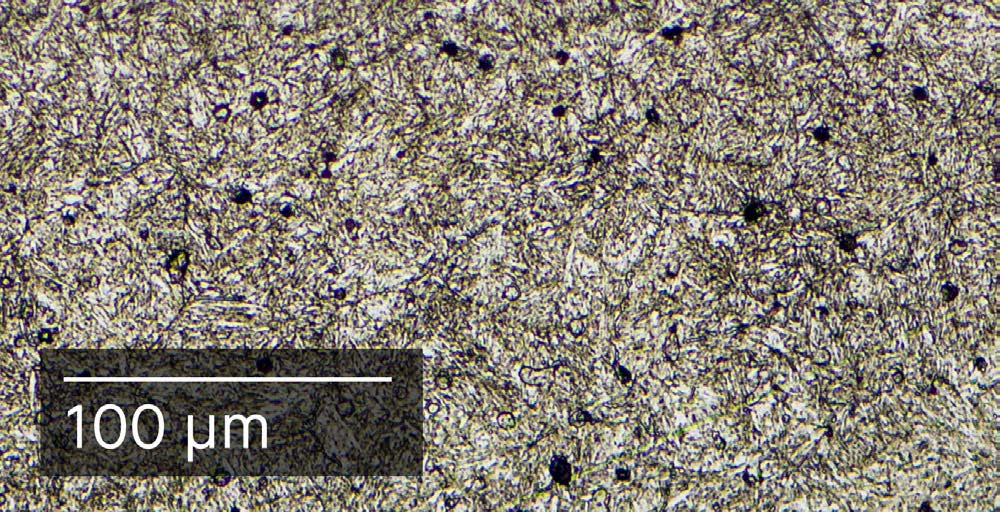
H13 | Studio System 2
Material: H13 Tool Steel
H13 tool steel is hot work steel with great hot hardness, resistance to thermal fatigue cracking, and stability in heat treatment. This makes it an ideal metal for both hot and cold work tooling applications.
Specs
- Yield Strength:
- Sintered: 650 MPa
- Heat-treated: 1250 MPa
- Wrought, heat-treated: 1525
- Ultimate Tensile Strength:
- Sintered: 1325 MPa
- Heat-treated: 1720 MPa
- Wrought, heat-treated: 1950 MPa
- Elongation at Break:
- Sintered: 2.3%
- Heat-treated: 5.8%
- Wrought, heat-treated: 9%
- Hardness:
- Sintered: 35
- Heat-treated: 45
- Wrought, heat-treated: 54
- Density:
- Sintered: ≥93.5%
- Wrought, heat-treated: 100%
Application
- Extrusion dies
- Injection molds
- Hot forging dies
- Die casting cores, inserts and cavities
Technology/Process
- Bound Metal Deposition™
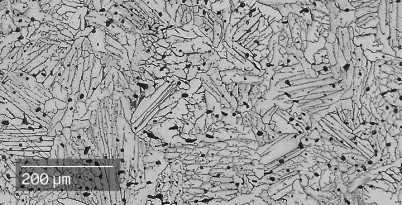
Ti64 | Studio System 2
Material: Titanium Alloy
Ti64 is an alloy of titanium, aluminum, and vanadium with a high strength-to-weight ratio and corrosion resistance.
Specs
- Ultimate Tensile Strength:
- Sintered: 845 MPa
- Yield Strength:
- Sintered: 730 MPa
- Elongation:
- Sintered: 17%
- Density (Relative): 97.5%
Application
A wide variety of high-performance applications such as:
- Specialty automotive components, including connecting rods and gearboxes for racing
- Prototyping of medical devices, including tweezers, forceps, clamps, suture instruments and more
- Consumer goods, including sporting goods and jewelry
Technology/Process
- Bound Metal Deposition™
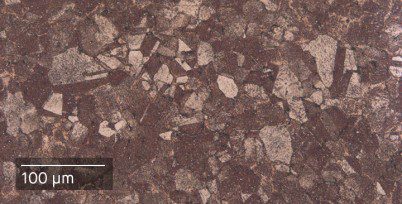
Copper | Studio System 2
Material: Copper
Copper is characterized by its electrical and thermal conductivity and ductility, and it is ideal for electrical equipment, plumbing, and heat transfer applications.
Specs
- Sintered:
- Ultimate Tensile Strength: 195 MPa
- Yield Strength: 45 MPa
- Elongation: 37%
- Density (g/cc): 8.75
Application
- Consumer and industrial electronics
- Heat exchangers
- Antennas
- Inductors
Technology/Process
- Bound Metal Deposition™
Direct Metal Laser Sintering
Direct Metal Laser Sintering (DMLS) is a metal additive manufacturing process that works by repeatedly spreading thin layers of metal powder over a build platform and then using a high-power laser to selectively fuse (sinter) the particles together.

Aluminum (AlSi10Mg)
Material: DMLS Aluminum AlSi10Mg
Technology/Process
Direct Metal Laser Sintering (DMLS)

Stainless Steel PH1 (15-5)
Material: DMLS Stainless Steel PH1 (15-5)
Technology/Process
Direct Metal Laser Sintering (DMLS)

Stainless Steel 17-4
Material: DMLS Stainless Steel 17-4 (GP1)
Technology/Process
Direct Metal Laser Sintering (DMLS)

Stainless Steel 316L
Material: DMLS Stainless Steel 316L
Technology/Process
Direct Metal Laser Sintering (DMLS)

Titanium (Ti64)
Material: DMLS Titanium (Ti64)
Technology/Process
Direct Metal Laser Sintering (DMLS)

Maraging Steel (MS1)
Material: DMLS Maraging Steel (MS1)
Technology/Process
Direct Metal Laser Sintering (DMLS)

Cobalt Chrome (MP1)
Material: DMLS Cobalt Chrome (MP1)
Technology/Process
Direct Metal Laser Sintering (DMLS)

NickelAlloy (IN625)
Material: DMLS NickelAlloy (IN625)
Technology/Process
Direct Metal Laser Sintering (DMLS)

NickelAlloy (IN718)
Material: DMLS NickelAlloy (IN718)
Technology/Process
Direct Metal Laser Sintering (DMLS)

Copper (C18150)
Material: DMLS Copper (C18150)
Technology/Process
Direct Metal Laser Sintering (DMLS)
